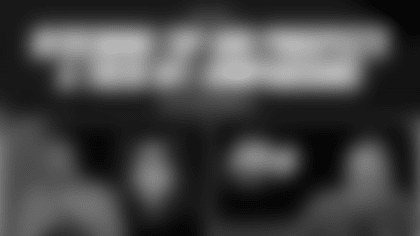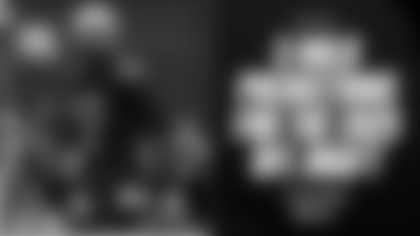This season marks the 40th anniversary of the 1978 Pittsburgh Steelers, and to commemorate that team, which was the first in NFL history to win three Super Bowls, and in conjunction with Alumni Weekend, Steelers.com will present a four-part series looking back at the events shaping that historic season. The four parts are titled, The Prelude, The Preseason, The Regular Season, and The Playoffs.
"The Prelude"
To appreciate fully what they would become, it's important to understand what they had endured.
In 1974 and 1975, the Pittsburgh Steelers won Super Bowl championships, and by doing so the franchise that had gone four decades without winning anything suddenly was lumped with Green Bay and Miami as the only teams to have won Super Bowls back-to-back.
In 1976, the Steelers had what founder Art Rooney Sr. always referred to as the best team in franchise history. After a 1-4 start, the Steelers combined a punishingly effective running attack with a defense that posted five shutouts and allowed just 28 points over the final nine games of the regular season. During a 40-14 demolition of the Baltimore Colts in the playoffs, Franco Harris and Rocky Bleier, both of whom were 1,000-yard rushers during the regular season, were injured, and the dream of a three-peat died the following week in the AFC Championship Game in Oakland.
Then came 1977.
To characterize the 1977 season as one unending distraction is similar to referring to the Grand Canyon as a pretty big hole in the ground. There were holdouts, walkouts, lawsuits and counter-suits. Players demanded trades. Players and coaches faced off in court. Players were disciplined publicly and fined heavily by Commissioner Pete Rozelle. At the same time his team was going through a training camp practice, Coach Chuck Noll was sitting in a courtroom. A rookie died in a car accident during that same camp. It started poorly and ended badly, and when it was time for the epilogue the Steelers were written off as a bunch of washed-up malcontents who made the trip from greatness to mediocrity in a few short months.
The tribulations fittingly began with a trial; Ernie Holmes' trial for possession of 250 milligrams of cocaine went to the jury on Feb. 21, 1977. Seventy-five minutes later, the verdict was read. Not guilty. Holmes walked out of that Texas courtroom a free man, but the Steelers' troubles, both legal and internal, were far from over.
* * *
The game was played on Sept. 12, 1976, and the image of what George Atkinson did to Lynn Swann that afternoon has come to define dirty play and forever link the phrase "criminal element" with the Steelers and the Raiders. With a pass thrown to another receiver in a different part of the field, Atkinson drove his forearm through the back of Swann's helmet, and the resulting concussion was one of several that ultimately contributed to the early end of a sparkling career.
At his weekly news conference the following day, Noll seethed. "There is a criminal element in every aspect of society. Apparently, we have it in the NFL, too … People like that should be kicked out of the game or out of football. It's a criminal act."
That was the basis for the lawsuit that Atkinson filed against Noll, and the issue that dogged the Steelers through much of the offseason almost fractured the team.
Noll was summoned to Oakland for depositions in late April 1977, and the trial was set for July 11. As a witness during the trial, Noll was forced to include Joe Greene, Mel Blount and Glen Edwards as players who also were part of the criminal element because of their own dirty play. Five days later, on July 16, 1977, Blount reacted to this by threatening to quit the Steelers, and he also said he planned to sue Noll for $5 million. Atkinson's lawyers immediately sought out Blount to have him testify against Noll, but luckily for the Steelers, that didn't happen.
As the trial wound down in California, the circus surrounding the Steelers had grown too large even for Ringling Brothers' three rings. On July 21, Jack Lambert decided not to report to training camp, because he was unhappy with the salary he was to be paid in the option year of the contract he originally signed in 1974 as a rookie from Kent State.
On July 22, Noll was cleared of the charges filed by Atkinson, but the day was ruined by Edwards' announcement that he also was unhappy with his contract.
On July 28, Lambert's agent upped the ante a little bit, and this was the headline on the lead sports story in the Pittsburgh Press: "Agent tells Rooney: Jack wants traded."
Meanwhile, Blount also was a holdout, still fuming over what Noll said about him under oath in court.
The preseason progressed the way one would expect of a team in turmoil. There were some games when the Steelers got by on their talent alone, but other times the lack of focus, the distractions, the carnival atmosphere that seemed to have engulfed the entire organization was too much to overcome. Six preseason games were common in the 1970s, and the Steelers were a respectable 3-3, but one of those losses was to a Kansas City team that would go on to finish 2-12 in the regular season, and the other was a 30-0 blowout at the hands of the Dallas Cowboys.
Late in August, Noll named the team's captains for the upcoming season, and even this seemingly innocuous event became controversial. When word got to Lambert that he had been bypassed, he voiced his disappointment publicly. Noll fired back in the media that Lambert didn't deserve to be a captain because he held out all through training camp.
The 1977 regular season was at hand, and the chaos simply did not abate. After much détente from both camps, Blount dropped his lawsuit against Noll and rejoined the team after missing 56 days; Lambert finally reported on Sept. 1; but neither of those arrivals had much of an immediate effect on the on-field performance, as evidenced by that 30-0 debacle in Dallas, the worst loss for a Noll-coached team since 1969 when the Steelers finished 1-13.
Through most of the offseason, it had been team president Dan Rooney at the center of most every controversy, because he was the team's voice in contract negotiations. But three days before the start of the regular season, it was the Steelers founder who decided to speak. His words seemed to be a warning to all parties.
"This isn't like baseball," said Art Rooney Sr. "Baseball is an individual game. You can have eight players who dislike each other and the management, and they can still go up to the plate and hit. But this is a team game. Everybody has to work together."
The season opened with a 27-0 Monday night win over San Francisco, but everyone understood the Steelers would find out much more about themselves in six days when they were to host the defending Super Bowl champion Raiders. That was the first meeting since the "criminal element" trial, the first meeting since the 1976 AFC Championship Game in which the Steelers had to face the Raiders without their starting backfield.
Revenge, or maybe it was redemption that was on the minds of Steelers fans as they packed Three Rivers Stadium, but it wasn't to be. The Raiders were dominant in a 16-7 win in which they forced five turnovers and controlled the game physically throughout. When it was over, there was no longer any doubt about the direction the AFC was going, and the Steelers woke up the following morning to this in the daily newspaper, which appeared under the headline, "The End of a Dynasty."
"The Steelers have fallen from the game's pinnacle … The result is Oakland is now in a class by itself, while the Steelers are now one of about a half-dozen contenders in the conference."
Even though the Steelers regrouped to win the AFC Central Division with a 9-5 record, the team also lived down to the prediction that it had slipped back into the pack. The AFC's best records in 1977 belonged to Denver, Oakland, Baltimore and Miami. The Steelers played the Broncos, Raiders and Colts and lost all three games by a combined 68-35.
And there were more distractions, too.
Backup cornerback Jimmy Allen quit the team in October, but changed his mind the next day and came back. A couple of days before the game in Denver, Edwards left the team because he was unhappy with the new contract he had just signed, and he returned after the loss. Noll slipped on a patch of ice in Cincinnati and broke his arm on the night before a game against the Bengals that the Steelers lost.
The final indignity came in the playoffs, when the Steelers made a second trip to Denver and lost again to the Broncos, 34-21.
Said Bleier, "It ended the way we played all year."
In Part II, The Preseason, the 1978 Steelers begin cleaning house in an effort to cleanse the organization of 1977.














